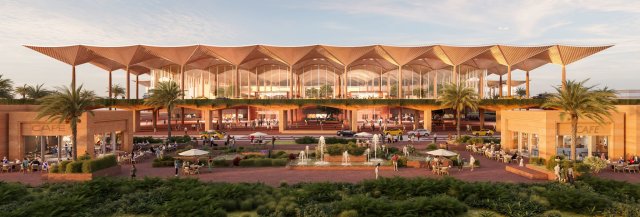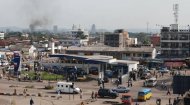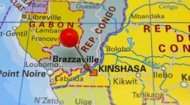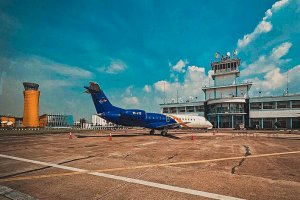|
Kinshasa Airport |
Kinshasa Airport |
Kinshasa Airport | Kinshasa Airport |
Explore all about the Democratic Republic of Congo in a series of pictures, videos and images.
More >
|
|

|
In terms of passenger numbers, Kinshasa N'djili Airport operates on a scale that reflects the DRC's current economic landscape. Before global travel disruptions, the airport typically handled just over one million passengers annually (compared with 84.2 million in 2025 for London's Heathrow.) While this figure is modest compared to mega-hubs like Johannesburg's O. R. Tambo or Addis Ababa's Bole International, it represents a significant volume of high-stakes travel. The traffic is a mix of business executives, development workers, government officials, and a large contingent of travellers visiting friends and relatives. Cargo is also a substantial part of the airport's operations, with valuable minerals and other exports departing from its facilities, while essential imports arrive to supply the capital's nearly 15 million residents. The passenger volume is a barometer of the nation's economic health and stability, with growth in traffic often heralding periods of increased investment and development. For the traveller, the experience at Kinshasa N'djili International Airport has been transformed in recent years. The opening of the 2015 modern international terminal significantly improved the passenger journey as this new facility offered a more spacious, cleaner, and better-organised environment compared to the older structures. Inside, passengers will find the standard facilities, including check-in counters, immigration and customs halls, and security screening points although, as with many African airports, Kinshasa is somewhat chaotic and the word 'queue' doesn't appear to be part of the local vocabulary. Passengers report that it's worthwhile carrying forty dollars or so in your pockets to 'assist' officials in processing your documents ($100 is ideal for speed but $40 will cover it if you show your pockets are empty thereafter!) As noted above, a further international terminal is slated for 2028. Airside, there are several passenger lounges for business class and premium passengers, a duty-free shop offering a selection of spirits, perfumes, and local souvenirs, and a few cafés and snack bars providing refreshments. While it may not boast the extensive retail and dining options of a global super-hub, the facilities are functional and represent a major step forward. Navigating the airport can still feel intense, especially for first-time visitors, but the new infrastructure has brought a much-needed layer of order and comfort to the departure and arrival process. From the terminal, travellers can access the city centre, located approximately 25 kilometres away, primarily via registered taxis, completing the final leg of their journey into the heart of Kinshasa. Overall DRC has 54 airports but only six are classified as 'international' and only 13 have scheduled flights. The other main airports are Lubumbashi International (FBM), Mbandaka (MDK), Gemena (GMA), Bangoka International (FKI), Matari (IRP), Bunia (BUX) and Goma International (GOM). Interesting trivia facts about Kinshasa N'djili Airport; it was a landing site for the NASA space shuttle when it operated. Now make your own virtual anding at the airport in the video (above, left). |








